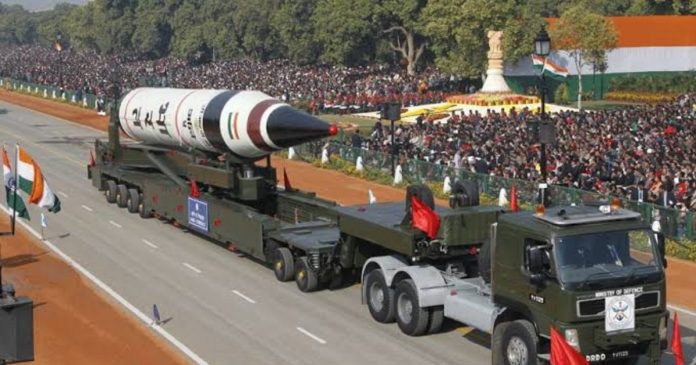India is preparing to take a major leap in defence technology with its newly upgraded Agni-5 missile. This new version, being developed by the Defence Research and Development Organisation (DRDO), is not for nuclear warheads but for delivering extremely powerful conventional bunker-buster bombs. This is a big shift in India’s military strategy and will give a major edge in high-impact warfare.
The global focus on modern warfare has changed after the United States recently used bunker-buster bombs in Iran. Inspired by that, India is now fast-tracking its own powerful missile system.
What Makes the New Agni-5 So Special?
The original Agni-5 missile had a range of over 5,000 kilometres and was mainly meant for nuclear deterrence. But the upgraded version will carry massive conventional bombs weighing up to 7,500 kilograms. These are known as “bunker-buster” warheads — designed to pierce deep into underground bunkers and explode inside.
These bombs are so powerful that they can go as deep as 80 to 100 metres under concrete and destroy even the most fortified enemy bases. That means command centres, missile storage silos, or hidden tunnels used by enemy countries like Pakistan or China could be taken out effectively.
No Need for Bomber Planes Like the US
While the US uses large bomber planes to drop their massive bunker-busters (like the GBU-57), India’s strategy is smarter and faster. DRDO is creating a system where these powerful warheads will be delivered by missiles. That means no need for aircraft, which reduces costs and increases speed. Plus, this makes it harder for enemies to detect and stop them in time.
The upgraded Agni-5 is expected to reach hypersonic speeds — between Mach 8 to Mach 20 — which means it will be able to travel several times faster than the speed of sound.
Two Versions in the Works
DRDO is not stopping with just one version. Two upgraded Agni-5 missile types are being developed:
- Airburst Variant – This one explodes above the ground and is good for attacking troops or equipment spread across a wide area.
- Deep Penetration Variant – This is designed specifically to target underground bunkers or hardened military infrastructure, going deep before it explodes.
Interestingly, the payload capacity of this version could go up to eight tons, which would make it even more powerful than many current bunker-buster systems in the world.
Range Will Be Shorter, But It’s Not a Problem
While these upgraded missiles will have a shorter range of around 2,500 km (compared to 5,000+ km of the original Agni-5), the experts say this won’t be a drawback. The reason is that their speed and power more than make up for the shorter distance. These missiles are meant for tactical and strategic targets in nearby countries like China and Pakistan.
What is a Bunker-Buster Bomb Anyway?
In simple terms, a bunker-buster is a special kind of bomb made to go deep into the ground before it explodes. These are not just regular bombs. They’re designed to punch through thick layers of concrete, steel, or earth, and then blow up inside the hidden targets. They’re perfect for attacking tunnels, underground command rooms, and missile bases.
India’s Growing Power in Modern Warfare
With this move, India is preparing itself for modern-day challenges. While nuclear deterrence is still important, precision-based strikes using massive conventional weapons are becoming more common. This upgrade in Agni-5 shows that India is not just keeping up with global military trends, but is creating a system that could actually outperform others in terms of efficiency, speed, and cost.
The DRDO is making sure that India can respond swiftly and powerfully to any serious threat — and that too without relying on foreign technology or support.





